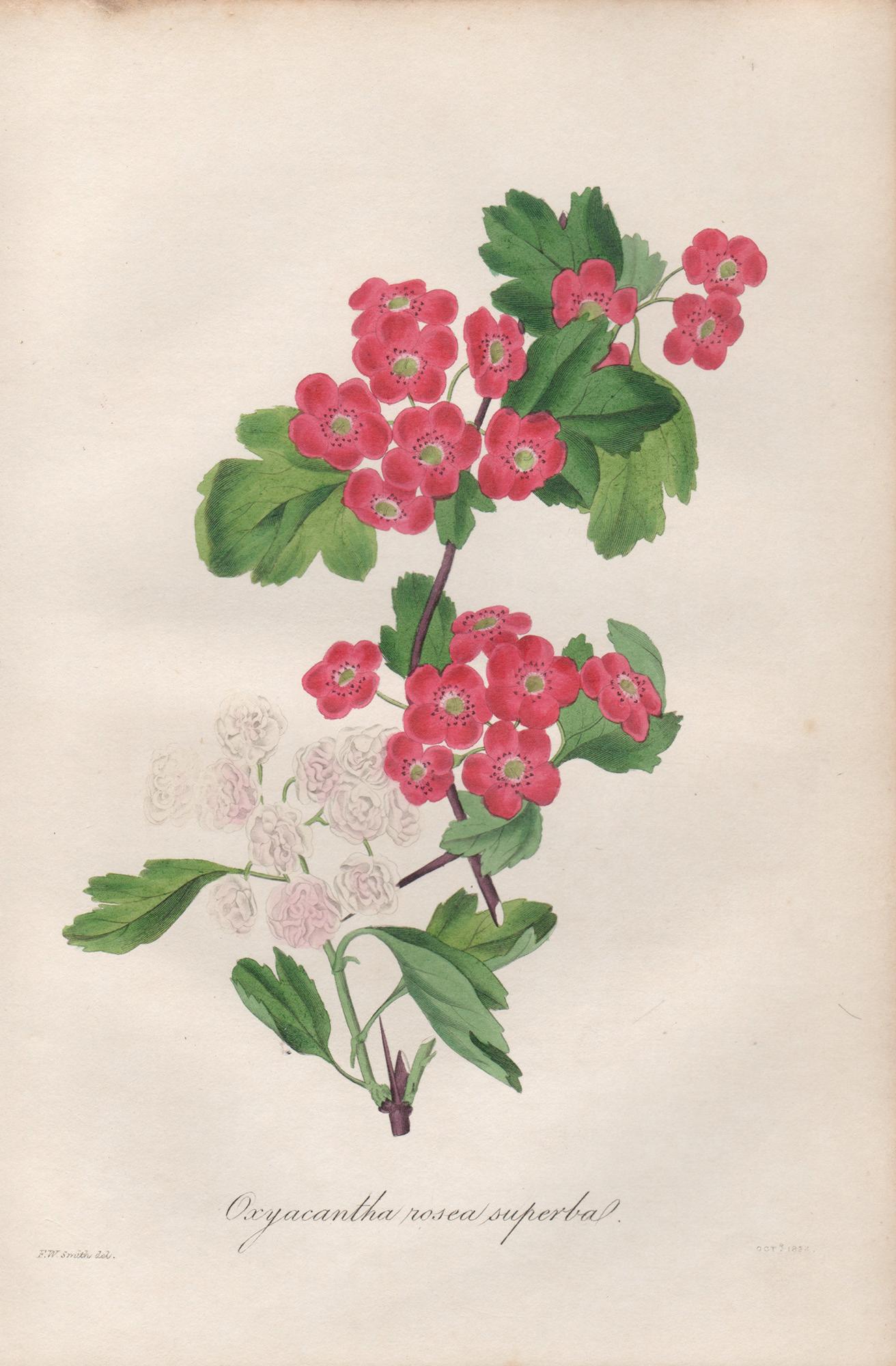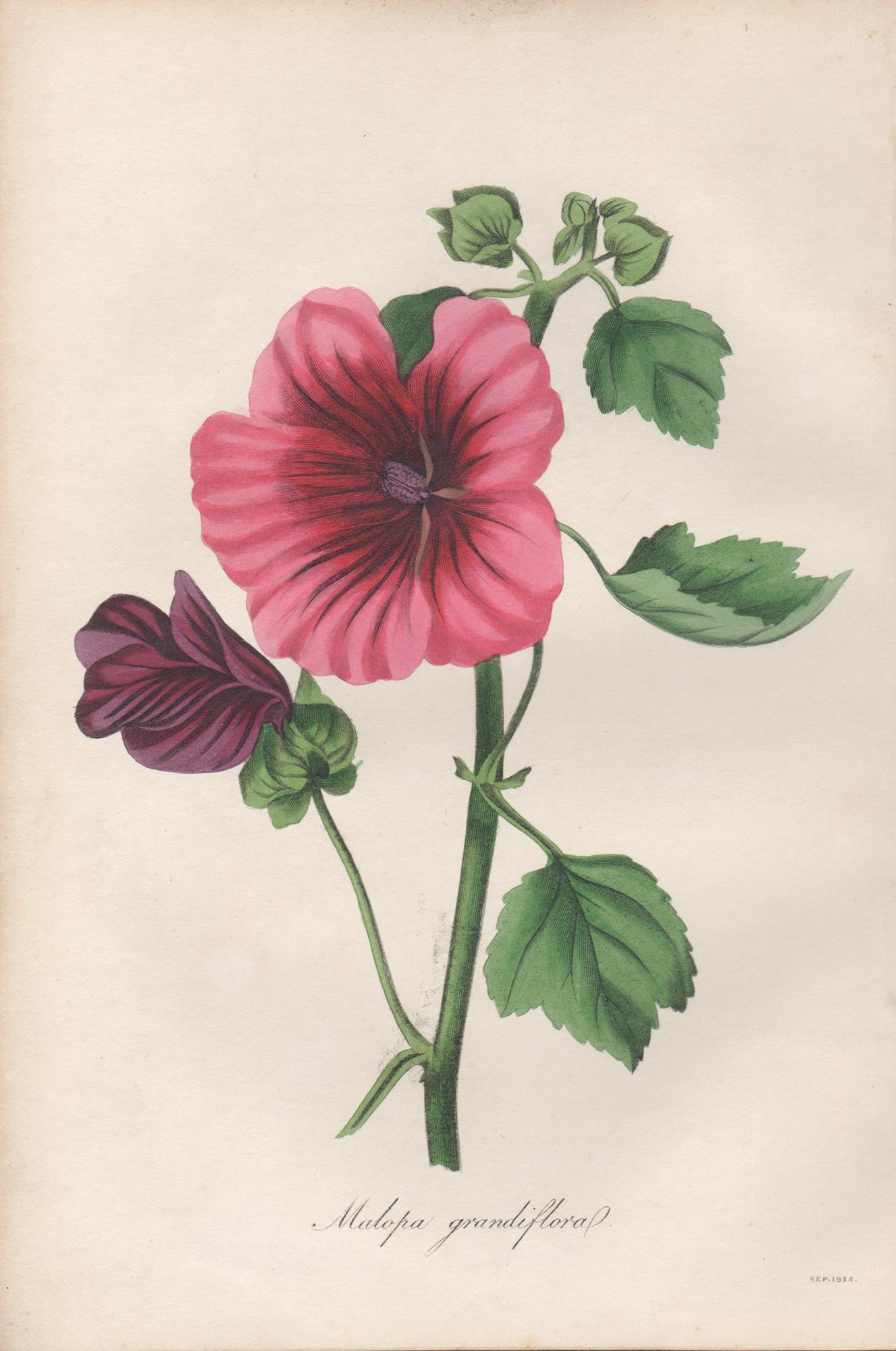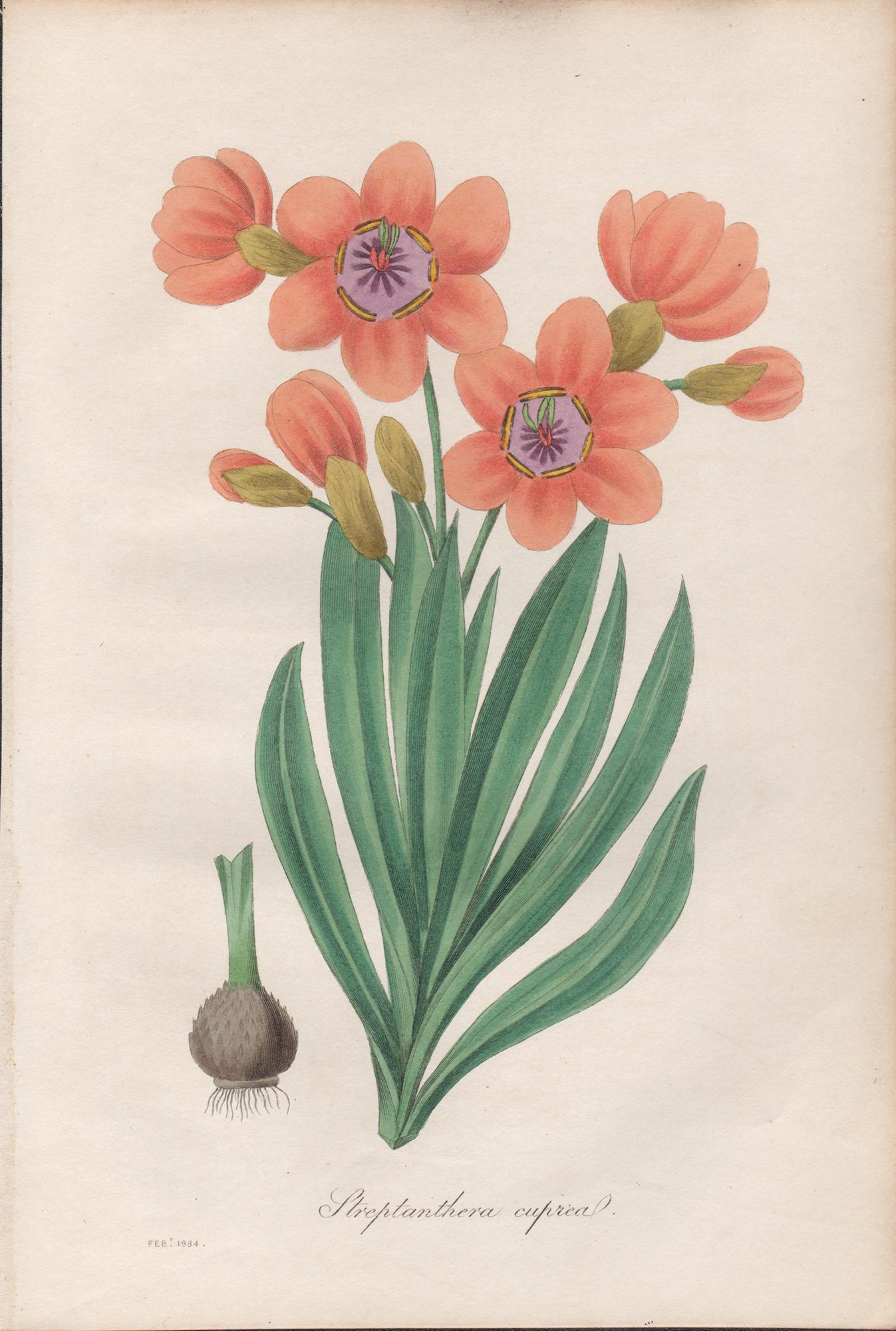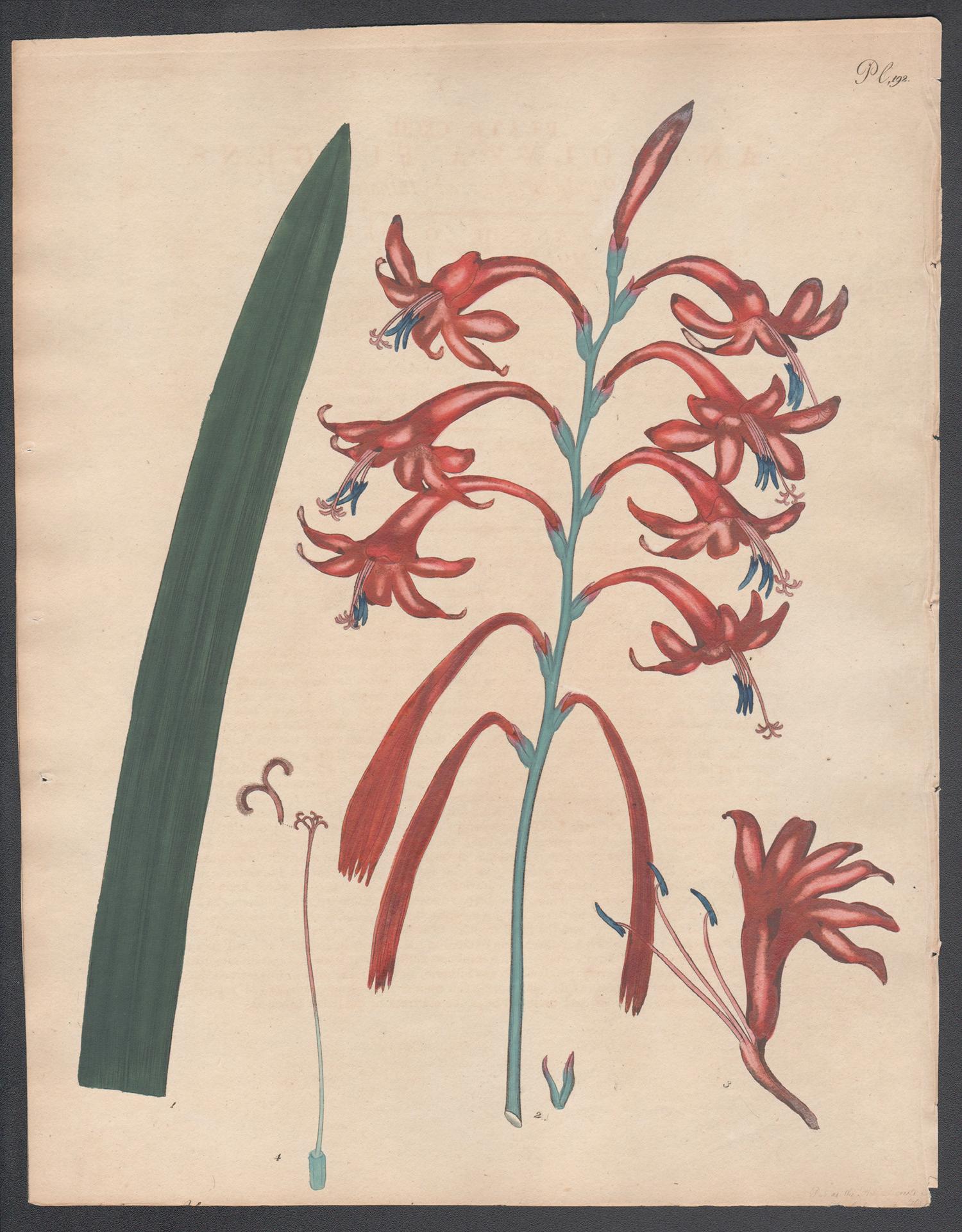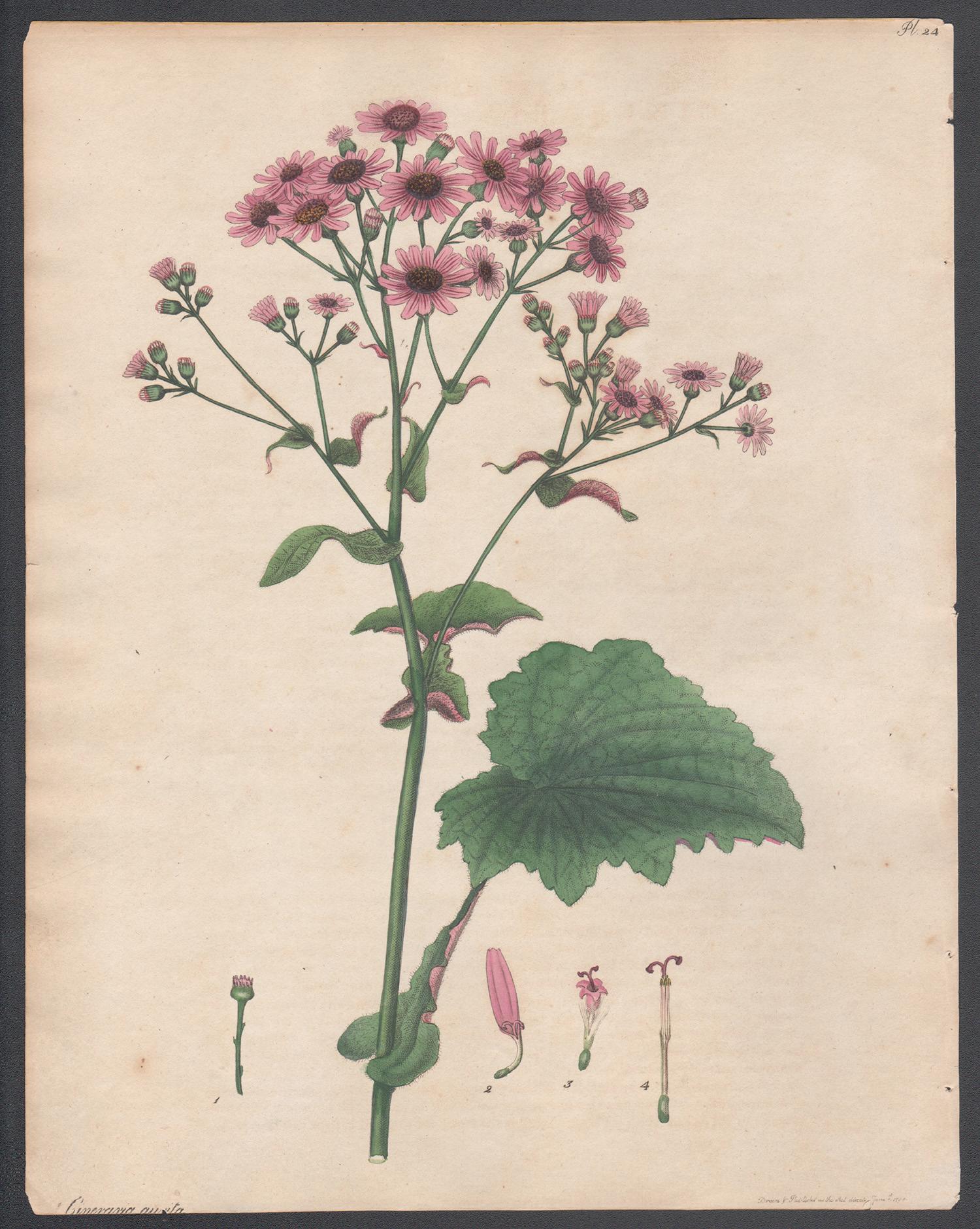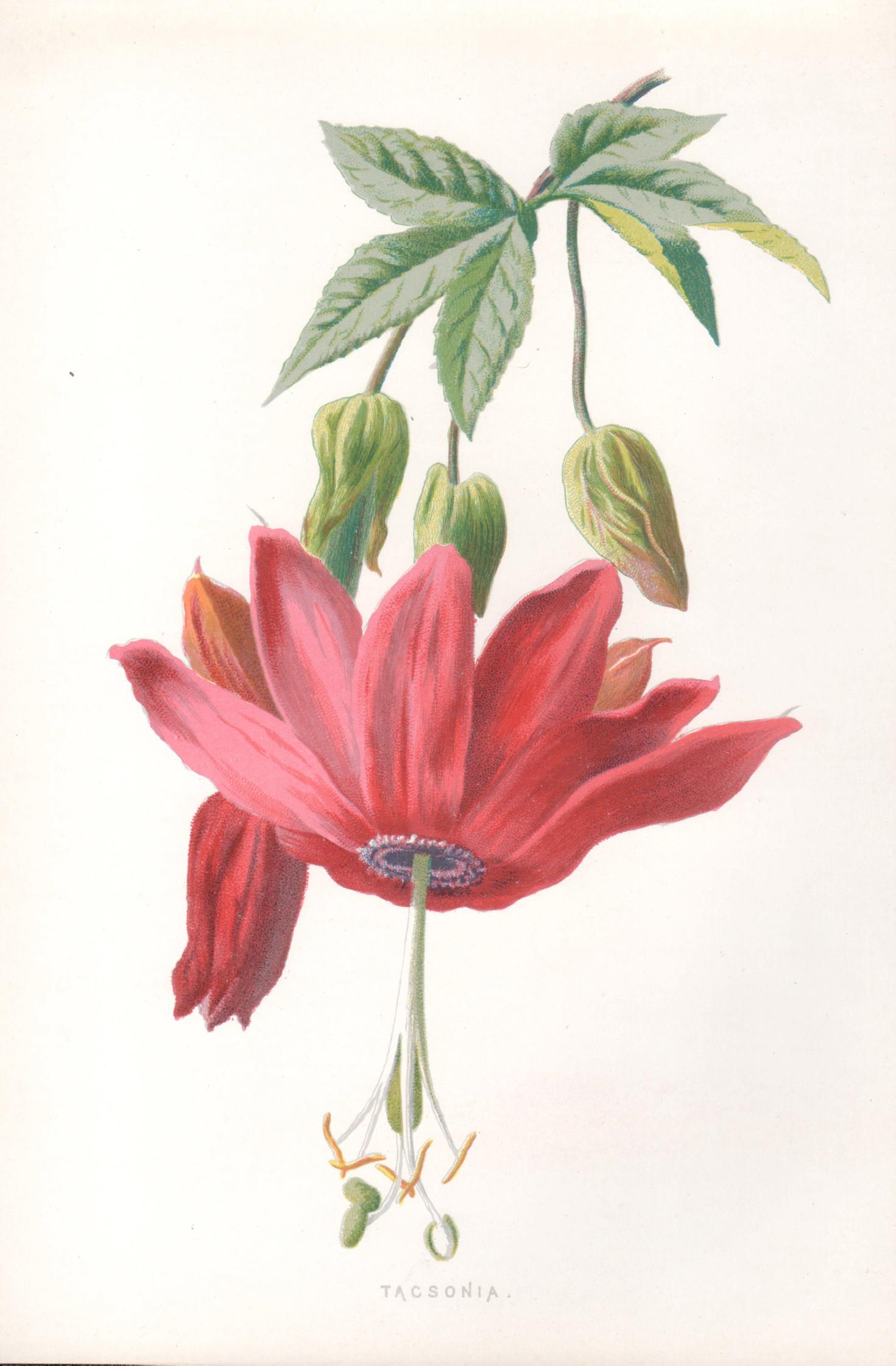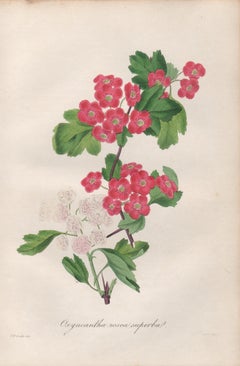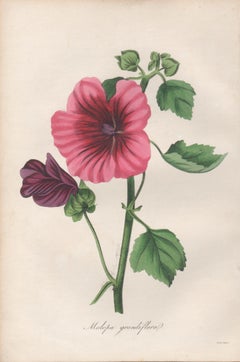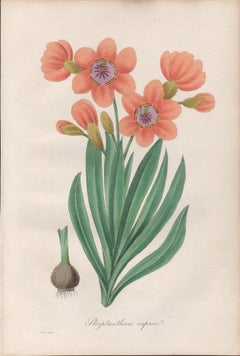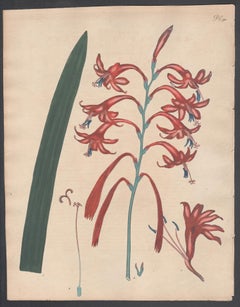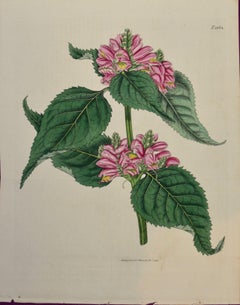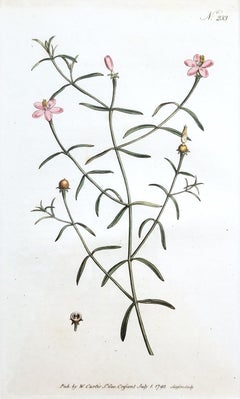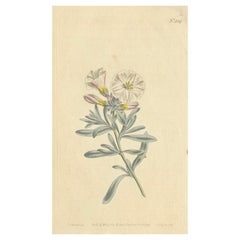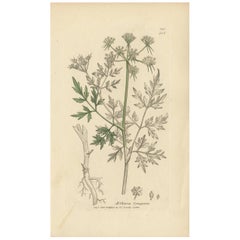Items Similar to Cape Atragene, Henry Andrews antique botanical pink flower engraving print
Want more images or videos?
Request additional images or videos from the seller
1 of 2
Henry C AndrewsCape Atragene, Henry Andrews antique botanical pink flower engraving print1800
1800
$85
£64.40
€73.90
CA$119.61
A$131.48
CHF 69.10
MX$1,596.68
NOK 862.02
SEK 816.71
DKK 551.52
About the Item
'Atragene Capensis - Cape Atragene'
Native of the Cape of Good Hope.
Original copper-line engraving with original hand-colouring from Henry Andrews' 'The Botanist's Repository', 1797-1812. Accompanied by the original descriptive text. 1800.
Henry Charles Andrews was an English botanist, botanical artist and engraver. He lived in Knightsbridge and was married to the daughter of John Kennedy of Hammersmith, a nurseryman who assisted Andrews in the descriptions of the plants he illustrated. Andrews was not only the artist, but also engraver, colourist, and publisher in an era when most artists were only employed to draw plates. The 'Botanist's Repository' was his first publication, issued serially in London in ten volumes between 1797 and 1812.
265mm by 210mm (sheet)
- Creator:Henry C Andrews (1770 - 1830)
- Creation Year:1800
- Dimensions:Height: 10.44 in (26.5 cm)Width: 8.27 in (21 cm)
- Medium:
- Movement & Style:
- Period:
- Condition:Faint toning to the paper. Creasing and stitching holes at far right edge of the sheet. A few tiny spots and tiny break in paper on left edge of the sheet.
- Gallery Location:Melbourne, AU
- Reference Number:1stDibs: LU124428843382
About the Seller
5.0
Platinum Seller
Premium sellers with a 4.7+ rating and 24-hour response times
Established in 2005
1stDibs seller since 2019
613 sales on 1stDibs
Typical response time: <1 hour
- ShippingRetrieving quote...Shipping from: Melbourne, Australia
- Return Policy
Authenticity Guarantee
In the unlikely event there’s an issue with an item’s authenticity, contact us within 1 year for a full refund. DetailsMoney-Back Guarantee
If your item is not as described, is damaged in transit, or does not arrive, contact us within 7 days for a full refund. Details24-Hour Cancellation
You have a 24-hour grace period in which to reconsider your purchase, with no questions asked.Vetted Professional Sellers
Our world-class sellers must adhere to strict standards for service and quality, maintaining the integrity of our listings.Price-Match Guarantee
If you find that a seller listed the same item for a lower price elsewhere, we’ll match it.Trusted Global Delivery
Our best-in-class carrier network provides specialized shipping options worldwide, including custom delivery.More From This Seller
View AllOxyacantha rosea superba, antique botanical pink flower engraving
Located in Melbourne, Victoria
Engraving with original hand-colouring. 1834. 230mm by 155mm. From Paxton's 'Magazine of botany and register of flowering plants' by Sir Joseph Paxton.
Category
Mid-19th Century Naturalistic More Prints
Materials
Engraving
Malopa grandiflora, antique botanical flower engraving
Located in Melbourne, Victoria
Engraving with original hand-colouring. 1834. 230mm by 155mm. From Paxton's 'Magazine of botany and register of flowering plants' by Sir Joseph Paxton.
Category
Mid-19th Century Naturalistic More Prints
Materials
Engraving
Streptanthera cuprea, antique botanical flower engraving
Located in Melbourne, Victoria
Engraving with original hand-colouring. 1834. 230mm by 155mm. From Paxton's 'Magazine of botany and register of flowering plants' by Sir Joseph Paxton.
Category
Mid-19th Century Naturalistic More Prints
Materials
Engraving
Antholyza Fulgens. Henry Andrews antique botanical flower engraving print
By Henry C Andrews
Located in Melbourne, Victoria
'Antholyza Fulgens - Refulgent-flowered Antholyza'
Original copper-line engraving with original hand-colouring from Henry Andrews' 'The Botanist's Repository', 1797-1812. Accompani...
Category
Early 19th Century Naturalistic Still-life Prints
Materials
Engraving
Two-coloured-leaved Cineraria. Andrews antique botanical flower engraving print
By Henry C Andrews
Located in Melbourne, Victoria
'Cineraria Aurita - Two-coloured-leaved Cineraria'
Native of the Canary Islands.
Original copper-line engraving with original hand-colouring from Henry Andrews' 'The Botanist's Re...
Category
Early 19th Century Naturalistic Still-life Prints
Materials
Engraving
Tacsonia, English antique pink flower botanical chromolithograph, 1895
By Frederick William Hulme
Located in Melbourne, Victoria
'Tacsonia'
Process print from Frederick William Hulme’s ‘Familiar Wild Flowers’, circa 1890.
Hulme was known as a teacher and an amateur botanist. He was the Professor of Freehand ...
Category
Late 19th Century Naturalistic Still-life Prints
Materials
Lithograph
You May Also Like
Flowering Lyons' Chelone Botanical: A 19th C. Hand-colored Engraving by Curtis
By William Curtis
Located in Alamo, CA
This early 19th century hand-colored double fold-out botanical engraving is entitled "Chelone Major" (Flowering Lyons' Chelone plant), plate 1864, published in London in 1816 in Will...
Category
1810s Naturalistic Still-life Prints
Materials
Engraving
Chironia Baccifera Berry-Bearing Chironia /// English Botanical Flower Engraving
By William Curtis
Located in Saint Augustine, FL
Artist: William Curtis (English, 1746-1799)
Title: "Chironia Baccifera Berry-Bearing Chironia" (Vol. 7, Plate 233)
Portfolio: The Botanical Magazine; or, Flower-Garden Displayed
Year...
Category
1790s Victorian Still-life Prints
Materials
Watercolor, Engraving, Intaglio
Antique Botanical Engraving of Silverbush - Rare 1799 Floral Print by Curtis
Located in Langweer, NL
Antique Botanical Engraving of Convolvulus Cneorum - Rare 1799 Floral Print by William Curtis
This engraving is from the publication "The ...
Category
Antique 1790s Prints
Materials
Paper
$134 Sale Price
20% Off
Antique Botany Print 'Aethusa Cynapium' by J. Sowerby, 1803
Located in Langweer, NL
Antique print titled 'Aethusa Cynapium'. This print originates from Sowerby's English Botany, or colored figures of British plants, 1803.
Category
Antique Early 19th Century Prints
Materials
Paper
Antique Botany Print of the Large-Flowered Nuttalia, 1847
Located in Langweer, NL
Antique print titled 'Nuttalia Grandiflora'. Botany print of the large-flowered nuttalia. This print originates from volume 3 of 'Annales de la Société Royale d'Agriculture et de Bot...
Category
Antique Mid-19th Century Prints
Materials
Paper
$95 Sale Price
20% Off
Soldanella Alpina Alpine Soldanella /// English Botanical Flower Engraving Print
By William Curtis
Located in Saint Augustine, FL
Artist: William Curtis (English, 1746-1799)
Title: "Soldanella Alpina Alpine Soldanella" (Vol. 2, Plate 49)
Portfolio: The Botanical Magazine; or, Flower-Garden Displayed
Year: 1788 ...
Category
1780s Victorian Still-life Prints
Materials
Watercolor, Laid Paper, Engraving, Intaglio
More Ways To Browse
Cape Of Good Hope
Pink Cape
French Quarter Painting
German Paintings Nude
Gumball Machine
Horse Portrait 19th Century
Hunt Slonem Blue Diamond
Hunt Slonem Chinensis
Joan Miro Bronze
John Ernst
Kaws Changbai
Kaws Holiday Taipei
Lois Mailou Jones
Luciano Zanoni
Mad Hatter Vintage
Male Nude Abstract Paintings
Marbella Painting
Metra Mitchell
